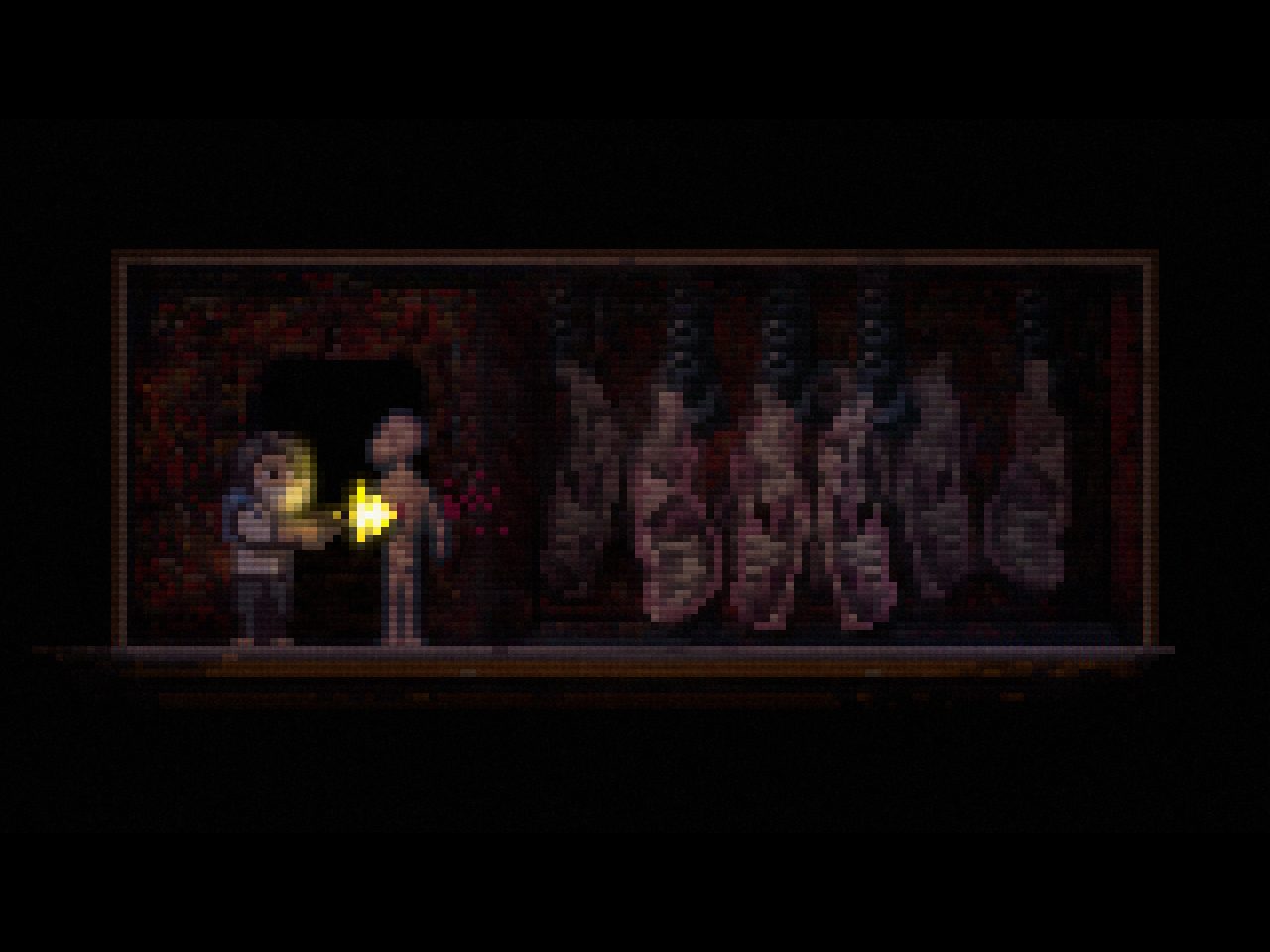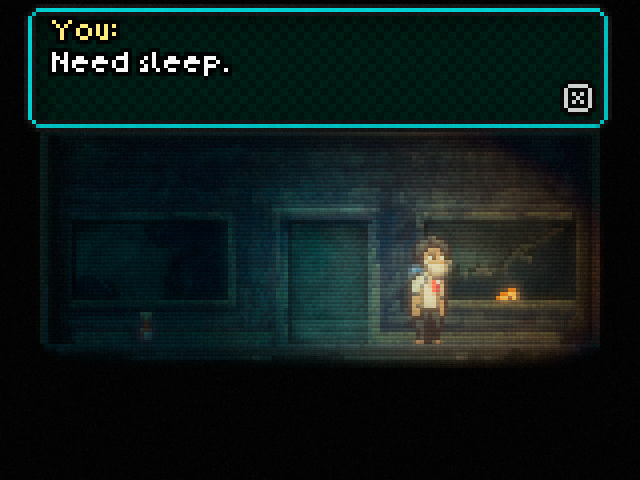
What if you were the last person alive? There is this scene early in The Omega Man, a half-decent Charlton Heston movie, that sums it up for me. Heston is the last man on Earth. At night he fends off vampiric hoards, but during the day he is alone, watching Woodstock in a room full of corpses and driving around in an expensive car. At one point he hears a payphone ring. Another phone starts to ring, and then, the overwhelming sound of thousands of telephones going off at the same time. He shouts, savagely, “There is no phone ringing dammit!” The sounds stop. He is left alone in silence, again. Staying sane is a tricky business.
In Jasper Byrne’s Lone Survivor, a man wakes up in a decent two bedroom apartment, wearing a face mark. He hears somebody on the radio, asking if there are any survivors. In the halls are fleshy abominations, inside-out creatures out to kill, but, nonetheless, he decides to leave the apartment. It’s a stock premise, but here it is taken to a relentlessly bleak place. The game is 2D with dark pixel art. Everything is crumbling and falling apart. The sound design relies heavily on drones and static to create an atmosphere of tension. It is a game played in a perpetual state of anxiety.
Most of Lone Survivor is spent walking around the corridors of the apartment building, either killing or avoiding the creatures that lurk in its halls. Combat is simple: point gun and shoot until dead. But enemies are everywhere and bullets aren’t. That increases the tension, and the game unsettles even more by contrasting the mundane and the abnormal. Byrne is uninterested in cheap scares; I was often more disturbed by Byrne’s willingness to play on the protagonist’s deteriorating mental health to create vivid scenes. Early on he has the protagonist walking into a cocktail party after avoiding hallways filled with monsters. The garrotte-tight tension gets right up to your throat and the uncertainty of what is going on and what to do next paralyses.

Then there’s the way the game fetishizes the normal. A kettle, a can opener, a bucket — everything takes on a deadly importance. Very few games would bother to make the distinction between instant coffee and ground espresso, but in an apocalyptic scenario these small comforts are all there is. The apartment is a safe space, the only one in the game, and as time goes on, starts to feel like a home. The moment when the protagonist finds gas for his stove is an important one akin to finding an oasis in the desert. The rhythm of survival horror is built around the scarcity of ammo, but here a can of beans is far more scarce and necessary. Finding and eating food – good food – becomes the main way of keeping your character healthy and sane. Cooking takes on a mystical power that only the truly hungry understand.
Jasper Byrne is indebted to Silent Hill in many ways. It’s clear he’s a fan – for a competition a few years ago he made a demake (the opposite of remake) of Silent Hill 2 titled, of course, Soundless Mountain 2. Silent Hill’s hallmarks are here. Both have the mundane settings (an apartment building was also used in Silent Hill 2), the characters on the edge of sanity, the not-quite-human-but-human-enough monstrosities that plague the protagonists. But it adheres too closely to the template set out by the series, cribbing most of its infrastructure and ideas from the game. Usually this isn’t an issue; this sort of borrowing is standard in videogames, where mechanics are expected to be iterated upon until they shine. It’s these ideas, the focus on linear exploration and so-so combat that diminish the stronger moments in the game.
Lone Survivor is a strong game, but one that too clearly lives in the shadow of its inspiration. At times it plays like a 2D, pixelated Silent Hill. I do not mean that as an insult. Lone Survivor is an accomplishment, and the comparison to the Silent Hill games is a positive one, but at times Lone Survivor feels more like an homage than an original creation. It’s a credit to Byrne that all the game’s best ideas are his own.
Lone Survivor was developed and published by Superflat World. This review is based on the PC version via Steam. It is also available on Mac.
Filipe Salgado works at a bank, but he’s not all bad. Sometime he writes for Kill Screen or writes stories about the deserts of the American Southwest on his blog Big Talk, Real Slow. You can also follow him on Twitter.